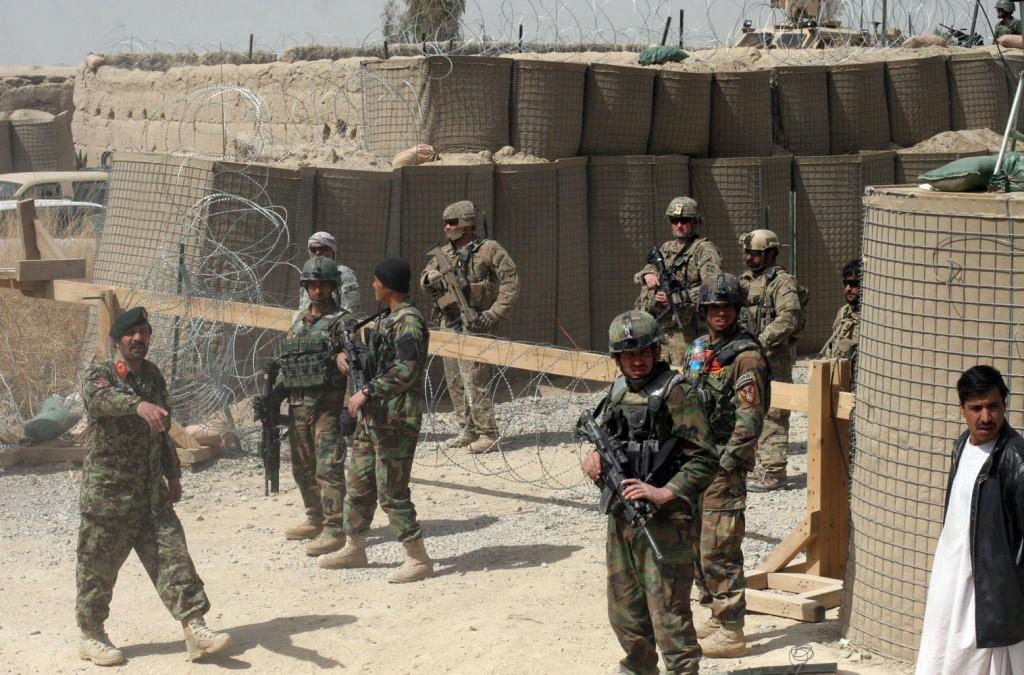Graphic War Photos Prompt Ethics Questions
May 2, 2012

Photos of U.S. soldiers posing with mangled Afghan corpses have polarized the Fordham community in recent weeks. A U.S. soldier, who obtained the photos of the soldiers in the 82nd Airborne Division released them to the Los Angeles Times with the intent to reveal the collapse of military discipline. Editor of the L.A. Times Davan Maharaj considered the requests from the Defense Department to not circulate the photos; however, his decision to publish two of the eighteen photos was based on the “duty to report vigorously and impartially on all aspects of the American mission in Afghanistan.”
The Defense Department was concerned that the circulation of the photos would result in an increase in attacks on U.S. soldiers in Afghanistan. Maharaj communicated with the Pentagon, White House and Army officials regarding the appropriate time to release the photographs weeks before the story’s publication date. When the L.A. Times decided to officially release the story, the Pentagon requested that the newspaper wait an additional 24 hours in order to protect the soldiers depicted in the photographs.
According to Isabel Krome, Fordham College at Rose Hill (FCRH) ’12, the photos should have been published, but they do not truly represent a collapse of military discipline. “A single case is not indicative of an entire system,” Krome said.
The two photos published, depict two soldiers holding a corpse’s hand with its middle finger in the air. In another photo, a U.S. soldier held his unit’s unofficial badge, “Zombie Hunter,” next to a dead body.
The conversation surrounding Maharaj’s choice to publish the photos has been a hot topic in the media world. The ethical justification had been made from the journalist’s side; however, U.S. Defense Secretary, Leon Panetta, condemned the newspaper for ignoring the Pentagon’s request to withhold publishing.
A Defense Department spokesman commented that the photos were not a true representation of its forces. Philip d’Afflisio, FCLC ’15, a former U.S. Army Staff Sergeant and Counter Intelligence Agent for the Special Operations Command said, “What the photos represent is not a complete collapse of military discipline, but individuals who have no moral fiber—and you find them in everyday society. They desire respect from others, but they cannot respect individuals who are from a different culture, race, sexual orientation, gender, etc…”
The L.A. Times reacted to the controversy surrounding the published photos by hosting a Q&A with Maharaj. Readers were able to post questions, which were later filtered out by the L.A. Times’ national editor, David Smith. One question, posted by a reader named Javier, addressed the motivation behind the newspaper’s publication of the photos, saying, “You have blown a thing out of proportion and sound more like the National Enquirer than a civic-minded paper? EXCLUSIVE PHOTOS! was your subhead.”
According to Maharaj, the American public has the right to see the photos, which is why he went forth with publishing.
Dr. John Entelis, professor of political science and director of Middle East studies said,“The few print sources that are left are doing everything they can to get readership back. The financial incentive has never been as severe as it is now.”
D’Afflisio said that the L.A. Times crossed the fine line between being a “civic-minded newspaper” and a tabloid. “There is a job on the media and government’s part that information should be released on a need-to-know basis and there are journalistic ethics involved that is placed on the L.A. Times editor,” D’Afflisio. “It doesn’t mean these heinous photos themselves needed to be published.”
Although some agree that the photos do represent the breakdown of military discipline, others have taken the opportunity to raise the issue concerning the role journalistic ethics should play in reporting news. The third player in the story involves the government and its unique role in dictating what information is necessary and what is harmful. The end result of the photographic controversy had been multiple attempts by the Defense Department and military to uphold the reputation of its troops and to prevent any violent backlash against active soldiers.









